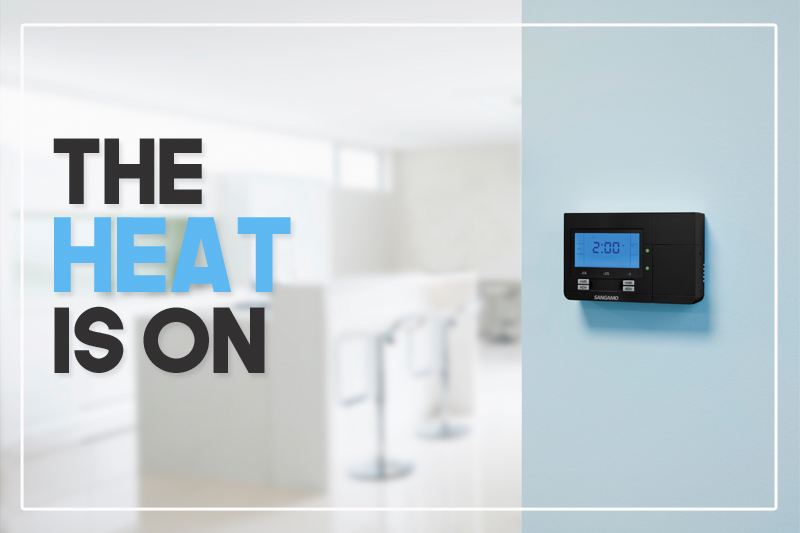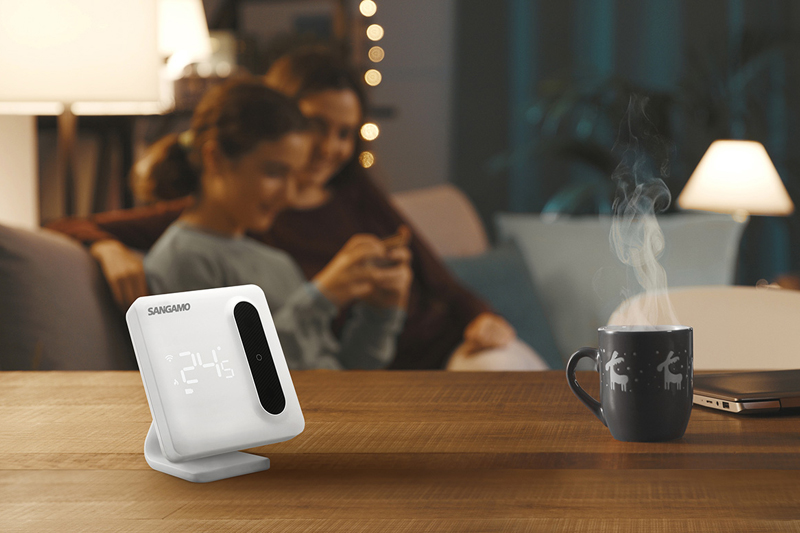Matt Parton, Product Development Manager with Sangamo, answers some of the key questions relating to smart heating controls and energy saving measures.
Q. With all homeowners looking to minimise energy costs, how can modern controls help get the best energy efficiency possible from a domestic heating system?
Modern controls include features which reduce the amount of time a boiler is firing, which in turn will lead to reduced energy usage and therefore result in reduced costs. Having the heating on when the property is vacant or having no control over the set point temperature will result in an inefficient system. Features such as seven-day scheduling and thermostat control ensure that the boiler is firing when the property is most likely to be occupied and does not exceed the desired temperature.
In essence modern heating controls offer automation to a heating system and work to avoid energy wastage by setting a logical pattern of heating. This is in comparison to relying on an end user to manually control the system, which can be very time consuming and costly if the end user forgets to switch the heating off.
There are advanced features available such as optimum start/stop which analyses the warm up and cool down periods of the heating system. Due to this analysis the firing time of the boiler is reduced, thus saving energy. In addition, the feature ensures that the set temperature is reached by the system at the programmed time thus preventing the need for the user to change the set point temperature which accelerates the firing of the boiler and leads to energy wastage.
Q. With technology continually evolving, what benefits do the latest smart controls provide?
Smart controls allow an end user to have full access to the operation of the control remotely via an app platform, which allows for settings and different modes to be adjusted remotely. This is particularly useful if there is a sudden change in the weather or in the user’s routine when settings can be modified accordingly.
An app platform also provides the user with historic heating patterns and a current live view of the heating system status. This provides an understanding of which times of the day the boiler is firing and thus enables a user to analyse and fine tune the programming of the heating control leading to a more efficient system.
One of the most noted advances in recent years is the popularity of Voice Control through virtual assistance. For convenience, or for users with restricted mobility, voice activated features enable a user to verbally change the set temperature or programming to assist with heating comfort. In addition, smart features such as open window/ door detection will cancel a boiler firing until the temperature stabilises or other conditions are met. Smart controls that are linked together via an app can also provide a whole host of automation processes with other smart devices in the property.
Q. How important are the aesthetics of smart heating controls?
Due to the popularity of smart phones and apps, smart heating controls have become a popular consumer product in recent years. Market data shows that there is a high demand for smart heating controls and this is a sector in which consumers are willing to invest. Function, operation and design are essential elements to be considered when it comes to the development and creation of desirable product solutions.
As well as general demand from consumers, there is an increasing requirement for design conscious heating controls for more commercial projects such as new builds and refurbishment projects. It is commonplace today to have a choice of wiring accessories and furniture and there is no reason why heating controls shouldn’t follow suit. Where once heating controls were considered a very functional product area, we are now seeing a trend towards more aesthetically designed solutions.
Smart technology in general has seen a massive increase in demand and the expectation of modern, high-end, vanguard technology is for the product to be designed and packaged in a complementary manner.
For more information, click here





